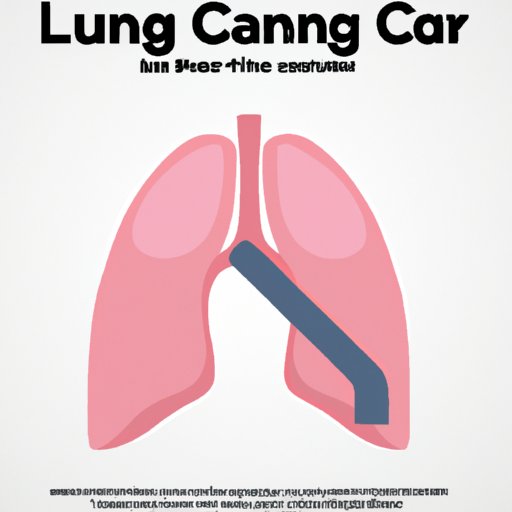
Introduction
Lung cancer is one of the leading causes of cancer-related deaths worldwide, affecting millions of people each year. It is a disease that begins in the lungs, where abnormal cells grow uncontrollably, forming a tumor which can invade nearby tissues and spread to other parts of the body. In this article, we will explore the causes, symptoms and treatments of lung cancer to help raise awareness and understanding of this deadly disease.
Understanding the science behind lung cancer
As mentioned earlier, lung cancer begins when abnormal cells grow in the lungs. These cells can develop into two main types of lung cancer: non-small cell lung cancer and small cell lung cancer. Non-small cell lung cancer is the most common type, accounting for approximately 85% of all lung cancer cases, while small cell lung cancer is less common but tends to grow and spread faster.
Environmental factors such as pollution, radon exposure, and secondhand smoke can all contribute to the development of lung cancer. Air pollution and radon exposure can lead to the mutation of lung cells, while secondhand smoke can increase the risk of lung cancer in non-smokers.
Who is at risk for lung cancer?
While anyone can develop lung cancer, certain demographic, lifestyle and genetic factors can increase the risk. Age is one of the most significant risk factors for lung cancer, with the majority of cases occurring in people over the age of 65. Men are also more likely to develop lung cancer than women, and those who have a family history of the disease have an increased risk of developing it themselves.
Smoking is considered one of the most significant risk factors for lung cancer. It is responsible for approximately 85% of all lung cancer cases, and smokers are fifteen times more likely to develop lung cancer than non-smokers. Vaping and poor diet can also increase the risk of lung cancer. However, some individuals who have never smoked develop lung cancer, suggesting that other factors such as air pollution and genetics can also contribute to the development of the disease.
Spotting the symptoms of lung cancer
The symptoms of lung cancer can vary depending on the type and stage of the disease but may include persistent coughing, chest pain, shortness of breath, hoarseness, unexplained weight loss, and fatigue. These symptoms can often be mistaken for other less severe conditions, which is why early detection and diagnosis are critical. If you experience any of these symptoms, it is essential to seek medical attention as soon as possible.
The impact of smoking on lung cancer risk
The link between cigarette smoking and lung cancer is well-established. Cigarette smoke contains more than 70 known carcinogens, which can damage lung cells and lead to cancerous growths. Quitting smoking is the most effective way to reduce the risk of developing lung cancer. Even those who have smoked for many years can benefit from quitting smoking, as it can significantly reduce the risk of developing lung cancer and improve overall health.
If you are struggling to quit smoking, there are many resources available to help. Nicotine replacement therapy, prescription medications, support groups and counseling services can all be effective in helping individuals quit smoking and reduce their risk of developing lung cancer.
Other causes of lung cancer beyond smoking
While smoking is the most significant risk factor for lung cancer, there are other contributing factors that can cause or increase the risk of the disease. Exposure to air pollution and radon can lead to changes in lung cells that can contribute to the development of cancer. Genetics can also play a role in the development of lung cancer. Individuals who have a family history of the disease may have an increased risk of developing it themselves and should discuss the appropriate screening options with their healthcare provider.
Treatments for lung cancer
The treatment options for lung cancer depend on the type and stage of the disease, as well as the individual’s overall health and preferences. Surgery, chemotherapy, and radiation therapy are the most common treatment options for lung cancer. In some cases, a combination of these treatments may be necessary to achieve the best outcomes.
The goal of lung cancer treatment is to remove or destroy cancer cells in the body and to prevent them from spreading to other organs. Early detection and treatment can significantly improve the chances of survival.
Living with lung cancer
A lung cancer diagnosis can be overwhelming, both physically and emotionally. Managing the physical symptoms of the disease and the side effects of treatment can be challenging. However, there are many strategies and resources available to help individuals cope with lung cancer.
In addition to medical treatments, individuals with lung cancer can also benefit from support groups, counseling services and lifestyle changes such as a healthy diet and regular exercise. Talking to family, friends and health care providers about the diagnosis and treatment options can also provide a sense of comfort and support.
Conclusion
Lung cancer is a serious disease that can have a significant impact on an individual’s health and well-being. However, understanding the risk factors, symptoms, and treatment options can help individuals and their loved ones make informed decisions about their health. Early detection and treatment are critical in the fight against lung cancer, and individuals should discuss appropriate screening options with their healthcare provider.
Remember, quitting smoking is the most effective way to reduce the risk of lung cancer, and resources are available to help individuals who are struggling to quit smoking. With the appropriate support and care, individuals with lung cancer can continue to live active and fulfilling lives.





